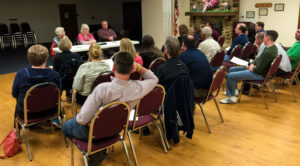BLOG
All too often, the other community association attorneys at our firm and I are asked for help on how to prevent unruly behavior from disrupting board and owner meetings. Since items addressed at these meetings generally have a significant impact on the welfare of an association and the financial responsibilities of its owners, conversations dealing with topics such as special assessments and annual elections can quickly become contentious. The following are helpful tips on how to try to keep your meetings on track and in order:
- Use Robert’s Rule of Order – This common form of parliamentary procedure for meeting protocol allows meeting facilitators to manage time effectively, all while ensuring that everyone stays on topic. Many people are already familiar with this method, making it easy for participants to follow and respect the meeting procedures that are in place.
 2. Be specific about who can attend – The association should establish rules determining who can participate in advance of the meeting. Generally, owners, or owners and residents are the only people allowed to participate in such meetings. Counsel for an owner is likewise permitted to attend.
2. Be specific about who can attend – The association should establish rules determining who can participate in advance of the meeting. Generally, owners, or owners and residents are the only people allowed to participate in such meetings. Counsel for an owner is likewise permitted to attend.
3. Make the purpose of the meeting clear – Prepare an agenda that outlines the specific items that will be discussed. Be sure to be transparent about the topics, providing participants with any supplemental documents they may need to make educated decisions.
4. Allow participation – Give each authorized attendee a voice but restrict statements to those dealing with agenda items only. Set forth the amount of time each person has to take the floor. This will prevent anyone from derailing the meeting, as it enables the chairperson to control and minimize tangents.
5. Permit contributions – Rather than have an open-ended agenda item that opens the floor to miscellaneous topics, allow owners to submit desired talking points, on the specified agenda items, in advance of the noticed meeting. It will enable owners to feel heard while also avoiding the possibility of the board being blindsided by a topic that the directors were not prepared to discuss.
6. Set the right tone – Set an example by remaining composed and following the meeting protocols that are in place. Be open to hearing other people’s perspectives and making the meeting feel more like a team effort rather than a dictatorship.
7. Enforce the rules consistently – Make sure that all participants are equally following the rules. Do not allow someone to speak for longer than the allotted time just because they are making a good point. In the same light, take action against those who continue to break the rules. If providing a noncomplying attendee with a verbal warning does not stop them, call for an immediate ejection the next time the person speaks out of order.
By effectively applying the approaches outlined in this article, it can become almost impossible to have an unproductive meeting. Having the right people in the room, with streamlined meeting tactics and a clear and concise agenda, helps enable association meetings to run as smoothly as possible.

